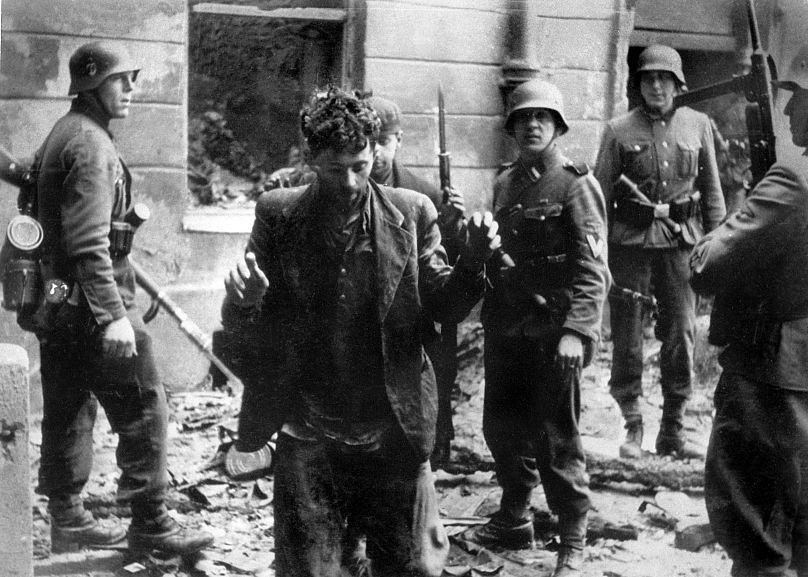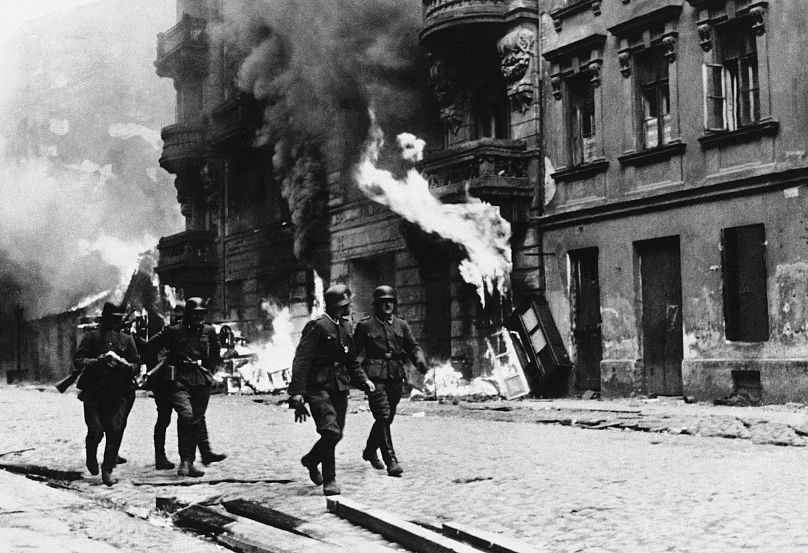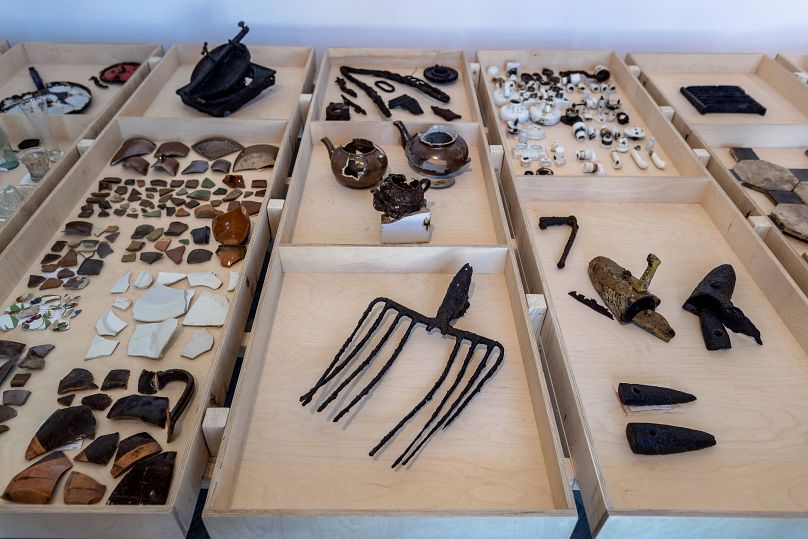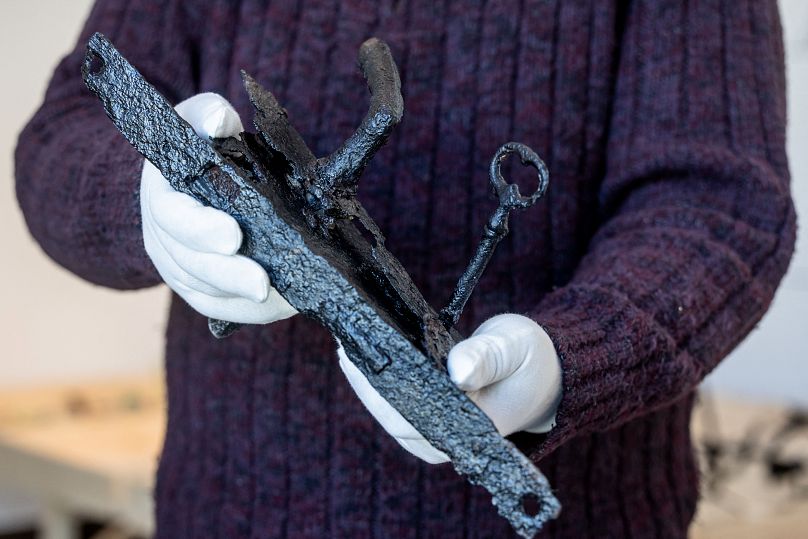An exhibition at the Kordegarda gallery, presenting artefacts found during excavations in the Warsaw ghetto, comes just in time for the 80th anniversary of the outbreak of the Warsaw Ghetto Uprising.
A new exhibition in the Polish capital, Warsaw, tells the poignant story of the Jews who lived, loved, and died during the Second World War.
From a child's burnt shoe to shattered kitchenware, the exhibit hosted at the Kordegarda gallery in partnership with the Warsaw Ghetto Museum, features rare and recently discovered artefacts from the wartime Jewish district, known as the Warsaw Ghetto.
This exhibition, titled 'Memory 1943', coincides with the 80th anniversary of the outbreak of the Warsaw Ghetto Uprising, when Jewish fighters revolted against Nazi German terror.
"Warsaw is not just one city, but two: one that we see, and another one down there, underground," co-curator Jacek Konik says.
"And these are, so to speak, voices from the buried city, calling from beneath our feet," he adds.
Konik led excavations at a site adjacent to the bunker where Mordechaj Anielewicz, the leader of the uprising, and his comrades committed mass suicide.
The history of the Warsaw Ghetto and its uprising
When Nazi Germany invaded Poland in 1939, approximately one-third of the city's population was Jewish.
A year later, the occupiers cordoned off the Jewish district, creating the ghetto, where no Jew could freely leave. Up to around 450,000 Jews were crowded into an area of around three square kilometres, resulting in deplorable living conditions, overcrowding, widespread, disease, starvation and violence.
The inhabitants of the ghetto were subjected to frequent deportations to concentration and extermination camps. But some of the remaining Jews in the ghetto put up armed resistance on 19 April 1943.
Mordechai Anielewicz, who led the Jewish Combat Organization (Zydowska Organizacja Bojowa, or ZOB), coordinated efforts to smuggle weapons into the ghetto and train fighters.
The uprising lasted for nearly a month, with the ZOB and other resistance groups holding out against the vastly superior German forces. But despite their bravery, the ghetto fighters were eventually defeated by the Nazis, and the remaining inhabitants were either killed or deported to concentration camps.
After the Warsaw Ghetto Uprising was suppressed, the Nazis ordered the destruction of the ghetto. They burned most of the buildings and infrastructure to the ground, including hospitals, schools, and synagogues
It is estimated that the death toll of the ghetto prisoners amounted to at least 300,000, killed by from bullets or gas, in addition to the deaths of 92,000 individuals caused by starvation, related illnesses, the Warsaw Ghetto Uprising, and the fatalities resulting from the final demolition of the ghetto.
A glimpse into the lives of Jews in the Warsaw Ghetto
The Kordegarda gallery's exhibition presents an array of everyday objects from the Warsaw Ghetto, including a burnt child's shoe, a shattered pram, and broken kitchenware, offering visitors a profound insight into the lives of the Jews who endured the horrors of antisemitism and war.
One item stands out - a charred door handle with a key still stuck in the lock, symbolising the well-known decree for Jews to abandon their apartments and leave the keys in the door.
The poignant Stroop report, issued by SS General Jürgen Stroop in May 1943 following the suppression of the Warsaw Ghetto Uprising, is also displayed.
This detailed account of the Nazi operation to liquidate the Jewish ghetto in Warsaw served as a warning to other Jewish communities in Europe and included photographs and descriptions of the ghetto's destruction and the deportation of its remaining inhabitants to concentration camps.
There are also some unlikely finds, such as the picture of Igo Sym, a Polish actor who collaborated with the German occupiers.
"Presumably it belonged to some young, pre-war fan of the handsome actor," Konik says.
"Unfortunately, behind the attractive appearance, there was a monster," Konik says of the star later assassinated by the Polish resistance.
Konik, the exhibition's curator, explains that these items bear witness to the will to carry on despite the atrocities of the time.
"That is perhaps what's most poignant - that ordinary life was cut short, and now, through this exhibition, we can complete the story," he says.
Preserving the memory of the Warsaw Ghetto
Today, few buildings remain from the ghetto, with one rare example being a pre-war townhouse at Chlodna street that was once home to Adam Czerniakow, tasked by the Germans to head the ghetto's Judenrat Jewish administration.
The public will soon be able to view recently discovered photos of the ghetto taken by a Polish firefighter, offering a new perspective on the time that isn't through German eyes.
The Polin Museum of the History of Polish Jews is hosting the exhibition and focuses on the fate of Jewish civilians during the uprising.
"Instead of responding to summons to turn up for transports heading towards imminent death, they remained in hiding. Their silent act of resistance was as important as armed combat," the Polin Museum writes on its website.
The 'Memory 1943' exhibition at the Kordegarda gallery in Warsaw runs until 7 May 2023.
Check out the video above for a look inside the Kordegarda gallery's poignant exhibition.















